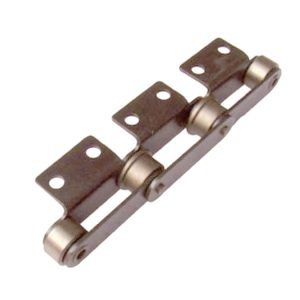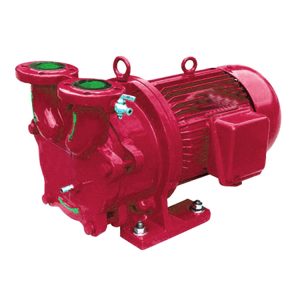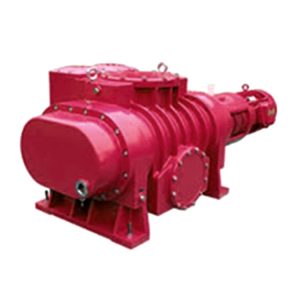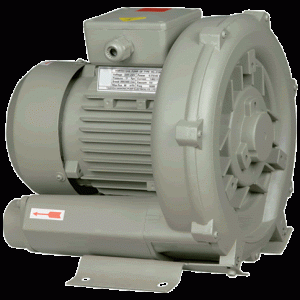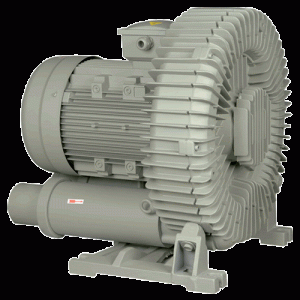Product Description
Company Profile
HangZhou Doerbee International Trade Co. , Ltd. , located in HangZhou hi-tech Development Zone, ZheJiang Province, the company’s main auto parts, mechanical and electrical supplies. Our company has established long-term and stable cooperative relations with many auto parts factories in ZHangZhoug and ZheJiang provinces. We value credit, abide by contracts, guarantee product quality, win the trust of our customers, and make every effort to follow their needs, continuous product innovation and service improvement. OEM, sample can be customized. We will gradually improve the product types and details, if you have non-standard products need us to help you find Chinese manufacturers, please contact us, send samples, we will be your most responsible and professional partner in China. Looking CHINAMFG to working with you.
Every month, we will go back and forth to each auto parts manufacturer to find and compare all kinds of high quality and low price products for you. If you have samples, but can not confirm the model or name, you can also send samples to us, we will try our best to find out the sample manufacturers in China, compare the quality for you, and provide quotation. We represent all kinds of auto parts and mechanical and electrical products, in the future we will continue to improve the product category, please pay attention to us, any need, please feel free to contact us. At present, there are more than 3.3
Q1. How to buy?
A1:Large quantity for more discount : Inquiry → Quotation → Price resonable → Check with specification → Proforma Invoice sent → Payment made → Product shipment → Customer
Q2. What is your terms of payment?
A2:T/T 30% as deposit, and 70% before delivery. We’ll show you the photos of the products and packages before you pay the balance.
Q3. How about your delivery time?
A3:Generally, it will take 20 to 40 days after receiving your advance payment. The specific delivery time depends on the items and the quantity of your order.
Q4. Can you produce according to the samples?
A4:Yes, we can produce by your samples or technical drawings.
Q5. What is your sample policy?
A5:We can supply the sample if we have ready parts in stock, but the customers have to pay the sample and courier cost.
Q6. Do you test all your goods before delivery?
A6:Yes, We will take 100% testing and photos before delivery, and keep communication with you at any time.
Q7: How do you make our business long-term and good relationship?
A7:We are not only partners, but also friends. We will try our best to provide you with the most cost-effective products. If you have any goods that are difficult to purchase, we will try our best to find them in China. We will become your most trusted buyers in China.
/* January 22, 2571 19:08:37 */!function(){function s(e,r){var a,o={};try{e&&e.split(“,”).forEach(function(e,t){e&&(a=e.match(/(.*?):(.*)$/))&&1
| After-sales Service: | 100000 Km |
|---|---|
| Warranty: | 2 Years |
| Type: | Auto Clutch Bearing |
| Material: | Carbon Steel |
| Tolerance: | P5 |
| Certification: | TS16949 |
| Samples: |
US$ 8/Piece
1 Piece(Min.Order) | |
|---|
| Customization: |
Available
| Customized Request |
|---|
Can pulleys be used in both simple and complex mechanical systems?
Yes, pulleys can be used in both simple and complex mechanical systems. Pulleys are versatile mechanical devices that can be incorporated into a wide range of systems to transmit power, change direction, or provide mechanical advantage.
In simple mechanical systems, pulleys are often used to create a mechanical advantage by reducing the effort force required to lift or move a load. For example, a simple pulley system with a single fixed pulley can distribute the load’s weight over multiple strands of rope or cable, reducing the force needed to lift the load. Simple pulley systems are commonly used in applications such as flagpoles, well buckets, or manual hoists.
In more complex mechanical systems, pulleys can be part of intricate arrangements to achieve specific functions. They can be combined with multiple pulleys, belts or ropes, and other mechanical components to create complex systems for power transmission, tensioning, or precise control. Examples of complex systems that utilize pulleys include conveyor belt systems, industrial machinery, cranes, and elevators.
Pulleys offer several advantages in both simple and complex mechanical systems:
1. Mechanical Advantage: Pulleys can provide a mechanical advantage by distributing the load’s weight over multiple strands of rope or belt, reducing the effort force required to lift or move the load.
2. Direction Change: Pulleys can change the direction of the force applied, allowing for redirection of motion or routing of belts or ropes around obstacles.
3. Speed Adjustment: By adjusting the size of pulleys and the number of pulley systems, the speed of the output motion can be modified relative to the input motion.
4. Power Transmission: Pulleys are effective in transmitting power between shafts or components, allowing for the transfer of rotational motion and torque.
5. Versatility: Pulleys can be used with different types of belts or ropes, such as flat belts, V-belts, timing belts, or wire ropes, providing flexibility in design and application.
Whether in simple or complex mechanical systems, the selection, arrangement, and sizing of pulleys should be carefully considered to ensure proper functionality, efficiency, and safety. Manufacturers’ guidelines, engineering principles, and best practices should be followed when incorporating pulleys into mechanical systems.
How are pulleys used in manufacturing processes and assembly lines?
Pulleys play a crucial role in manufacturing processes and assembly lines, facilitating the movement of materials, components, and products. They are utilized in various ways to enhance efficiency, increase productivity, and streamline production. Here’s how pulleys are commonly used in manufacturing processes and assembly lines:
1. Conveyor Systems:
Pulleys are extensively employed in conveyor systems, which are integral to manufacturing and assembly lines. Conveyor belts or chains run over pulleys at different points along the line, transporting materials or products from one workstation to another. The pulleys help guide and support the conveyor belts or chains, ensuring smooth and controlled movement. By utilizing pulleys of different sizes or configurations, conveyor systems can be designed to accommodate various layouts, inclines, or speed requirements.
2. Material Handling:
Pulleys are used to facilitate the lifting, lowering, and movement of materials in manufacturing processes. Cranes, hoists, and lifting equipment often incorporate pulley systems to provide mechanical advantage and precise control over heavy loads. The pulleys, along with ropes, cables, or chains, allow operators to lift and position materials with minimal effort and improved safety.
3. Assembly Line Automation:
In automated manufacturing and assembly lines, pulleys are utilized in robotic systems to control the movement of robotic arms. The pulleys are incorporated into the mechanism that guides the cables or belts connected to the robotic arms. By adjusting the position and tension of the pulleys, precise and coordinated movements can be achieved, enabling efficient assembly processes.
4. Tensioning and Alignment:
Pulleys are crucial for maintaining proper tension and alignment in manufacturing processes. Tensioning pulleys are used to apply the appropriate tension to belts or chains, ensuring optimal power transmission and preventing slack or slipping. Alignment pulleys are employed to align belts or chains, minimizing wear, reducing vibrations, and prolonging the life of the components.
5. Power Transmission:
Pulleys are central to power transmission in manufacturing processes and assembly lines. They are used in conjunction with belts, chains, or gears to transfer rotational motion and power from one component to another. By selecting pulleys of different sizes or ratios, the speed and torque can be adjusted to suit specific production requirements.
6. Tool and Machine Positioning:
In manufacturing processes, pulleys are often integrated into tool positioning systems or adjustable machine setups. By using pulleys and cables, tools or machine components can be easily repositioned, allowing for quick changeovers or adjustments to accommodate different workpieces or production tasks.
Overall, pulleys are indispensable in manufacturing processes and assembly lines, enabling efficient material handling, precise movement control, proper tensioning and alignment, power transmission, and flexible tool positioning. Their use contributes to increased productivity, improved workflow, and enhanced automation in the manufacturing industry.
What safety precautions should be observed when using pulleys?
When using pulleys, it is important to observe several safety precautions to ensure the well-being of individuals involved and prevent accidents. Here are some key safety precautions that should be followed:
1. Proper Training: Individuals who operate or work around pulley systems should receive proper training on their usage, including understanding the equipment, safety procedures, and potential hazards. Training should cover topics such as load limits, proper lifting techniques, and the importance of following safety guidelines.
2. Inspections and Maintenance: Regular inspections and maintenance of pulleys are crucial for identifying any signs of wear, damage, or malfunction. Inspect pulleys for cracks, deformation, excessive wear, or any other issues that may compromise their integrity. Replace damaged or worn-out pulleys immediately to prevent accidents.
3. Load Capacity: Ensure that the load being lifted or moved does not exceed the rated load capacity of the pulley system. Exceeding the load capacity can lead to overloading, which may result in equipment failure, accidents, or injuries. Refer to the manufacturer’s guidelines or load capacity charts for proper load calculations.
4. Secure Attachment: Ensure that pulleys are securely attached to their mounting points or support structures. Loose or improperly secured pulleys can cause the load to shift or fall, posing significant safety risks. Use appropriate hardware, such as bolts or clamps, and follow manufacturer recommendations for proper attachment methods.
5. Personal Protective Equipment (PPE): Individuals involved in pulley operations should wear the necessary PPE, depending on the specific hazards present. This may include safety helmets, gloves, safety glasses, and appropriate footwear. PPE helps protect against potential injuries from falling objects, impacts, or contact with moving parts.
6. Clear Work Area: Maintain a clear work area around the pulley system. Remove any obstructions, debris, or tripping hazards that could impede safe operation or cause accidents. Adequate space should be provided for safe movement and positioning of individuals involved in the operation.
7. Communication and Signaling: Establish clear communication and signaling protocols when working with pulleys. Use standardized hand signals or communication devices to ensure effective communication between operators, spotters, and other personnel involved. This helps coordinate movements, avoid misunderstandings, and prevent accidents.
8. Emergency Stop Procedures: Familiarize yourself with the emergency stop procedures for the pulley system. Ensure that all individuals involved are aware of how to quickly and safely stop the operation in case of an emergency or unexpected event. Clearly mark emergency stop buttons or switches and ensure they are easily accessible.
9. Lockout/Tagout: If performing maintenance, repairs, or adjustments on the pulley system, follow proper lockout/tagout procedures to isolate energy sources and prevent accidental startup. Lockout/tagout procedures help protect against unexpected movements or releases of stored energy.
10. Risk Assessment: Conduct a thorough risk assessment before using pulleys. Identify potential hazards, evaluate associated risks, and implement appropriate control measures to mitigate those risks. Regularly review and update risk assessments as necessary.
It is essential to consult relevant industry standards, guidelines, and local regulations specific to your application or jurisdiction to ensure compliance with safety requirements when using pulleys.
editor by CX
2024-03-10











